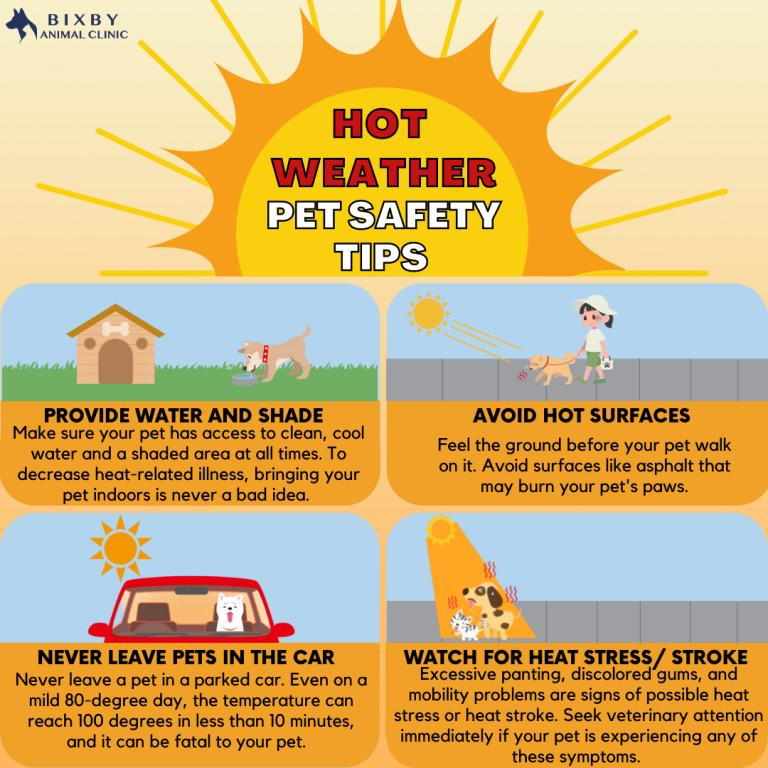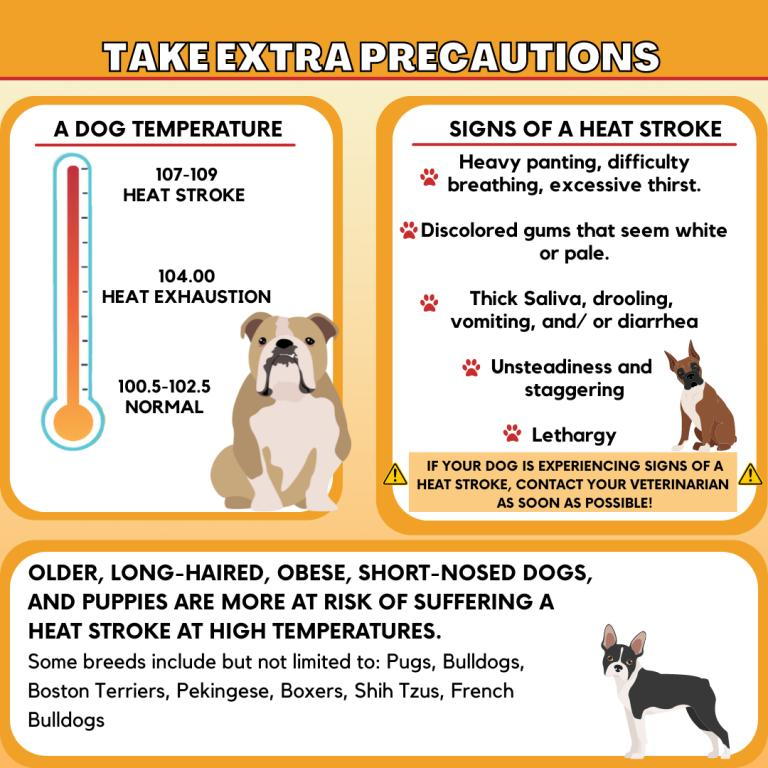
Hot Weather Tips for You and Your Dog
- posted: Oct. 25, 2022
HOT WEATHER TIPS FOR YOU AND YOUR DOG
Just like humans, pets can be just as uncomfortable with rising temperatures.
Here are some helpful hints on how to keep your pet cool and safe:
Watch for Heatstroke
A normal body temperature for a dog and cat ranges from 101.0° to 102.5°F. If your pet’s body temperature is 104°F, your pet may be near heat exhaustion. Anything above 104°F, your pet may be experiencing a heat stroke ranging from a body temperature of 107° F to 109° F, which will require immediate veterinarian attention.
Signs that your pet may be experiencing a heat stroke include but are not limited to:
- Heavy Panting, difficulty breathing, excessive thirst.
- Discolored gums that seem white or pale,
- Thick saliva, drooling, vomiting, and/ or diarrhea
- Unsteadiness and staggering
- Lethargy
If your pet is experiencing any heat stroke symptoms, seek veterinary attention immediately. Leaving a heat stroke untreated can result in brain, kidney, or other organ damage. If the heatstroke is severe and left untreated, coma and death can occur.
Have Plenty of Water
It’s important to keep your pet hydrated when it’s hot outside. Dogs lose moisture faster than humans, so fresh water must always be accessible for your pet.
Provide Shade
When your pet is outdoors, ensure that a cool and shaded area is always provided. Trees, tarps, and umbrellas are great to have in the yard to shade your pet from the sun. If possible, the best way to keep your pet safe is by keeping them indoors, which can decrease heat-related illness.
Limit Exercise on Hot Days
While it is important that your pet gets their necessary exercise, strenuous exercise with high temperatures can be dangerous. To lower the risk of your pet overheating in the sun, you can take your pet for a walk in the early morning or late at night when the sun is not as harsh and temperatures are lower. You can also change your pet’s routine and include indoor exercise if possible.
A good rule of thumb in also ensuring that your pet has good walking conditions is to check that the ground is not too hot to walk on. Concrete and asphalt can hold heat and can get hotter than the temperature outside. A good way to check if the concrete/ asphalt is too hot is by holding your hand on the ground for seven seconds. If it feels too hot for your hand, then it is too hot for your pet’s paw pads.
If hot surfaces can not be avoided, having dog booties is another way to protect your dog’s paws, but still, be wary of hot temperatures as this only protects your pet’s paws and not from other symptoms of heat stroke.
Don’t Leave Your Dog In a Parked Car
Never leave your dog nor cat unattended in a car, especially on a hot day. On a warm day, the temperature in a vehicle can exceed 120° in a matter of minutes-even with the window cracked open. With scorching temperatures like that, your pet can quickly suffer brain damage or die from heatstroke or suffocation.
Know Your Pet’s Health
Older, long-haired, obese, short-nosed dogs/cats and puppies/kittens are more at risk of suffering a heat stroke at high temperatures. Some breeds include but are not limited to: Pugs, Bulldogs, Boston Terriers, Pekingese, Boxers, Shih Tzus, French Bulldogs, and Persian cats.


Hours of Operation
8:00 am - 7:00 pm
8:00 am - 7:00 pm
8:00 am - 7:00 pm
8:00 am - 7:00 pm
8:00 am - 7:00 pm
8:00 am - 4:00 pm
8:00 am - 4:00 pm
Location
Find us on the map
Lakewood Pet Vet
6405 Del Amo Blvd
Lakewood, CA 90713
